Breathing Architecture
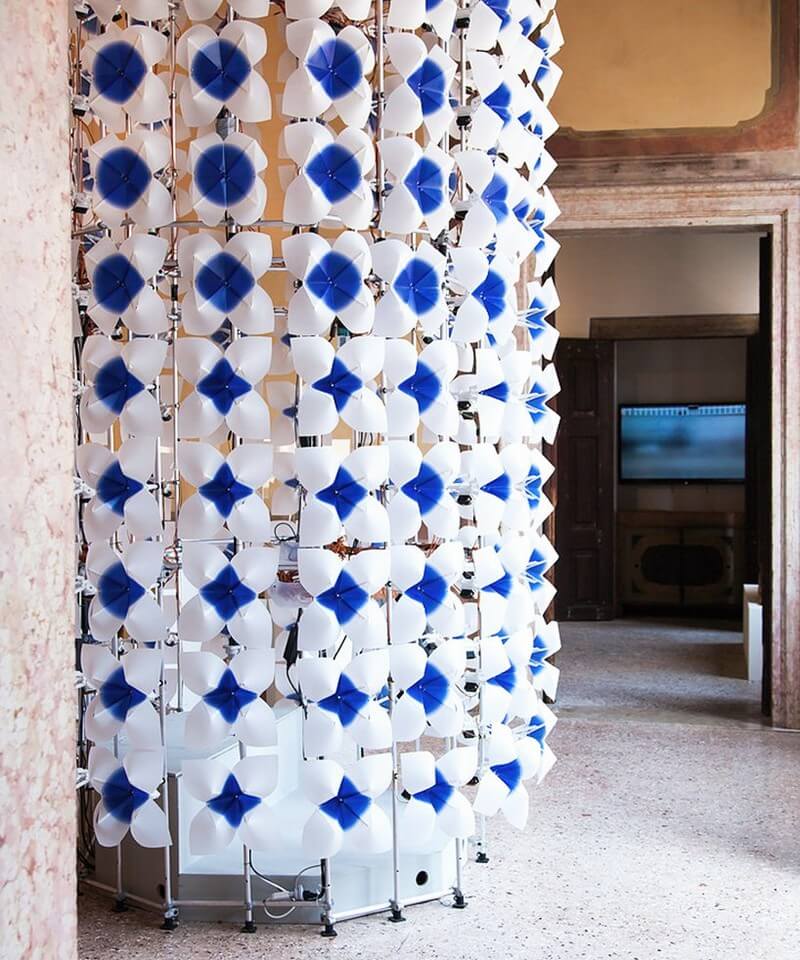
Inside venice’s palazzo mora, cara lee and stephan mundwiler of leeMundwiler architects have installed ‘CHiLL’ — a ‘breathing’ structure that kinetically responds to human interaction. as part of the ‘time – space – existence’ exhibit — a collateral event of the venice architecture biennale 2016 — the studio has wrapped a four-by-two meter diameter volume in 250 independently motion-activated mylar ‘flowers’.
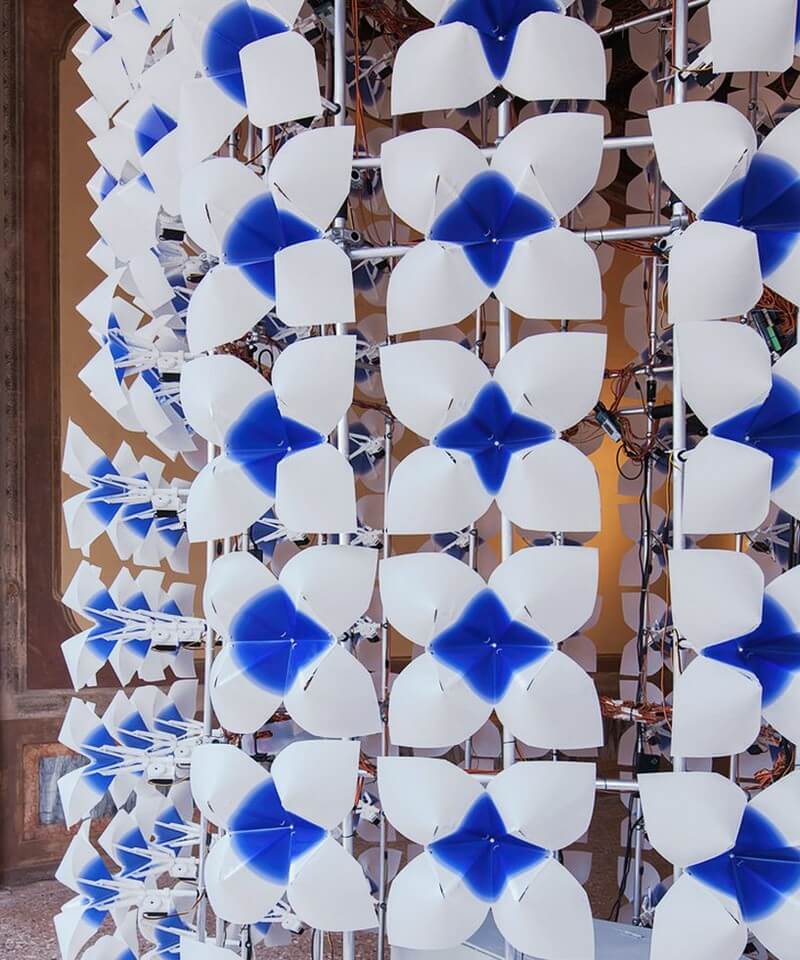
Secured to 3D printed mechanic nerves, the sea of white and blue blooms are tethered to an aluminum spine and operated by a complex network of software. the installation has been created with newly-developed hardware and software programs that utilize open-sourced engineering and information technology.
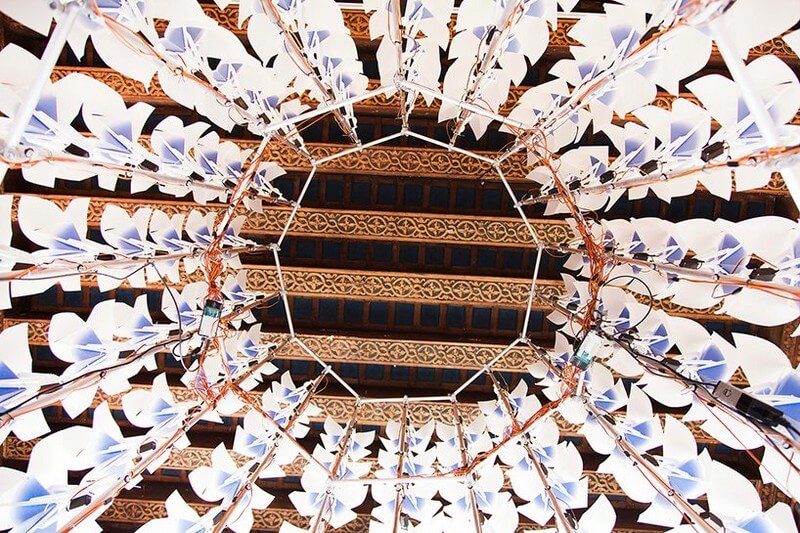
As visitors enter the interior space of ‘CHiLL’, sensors detect the action of the person’s movements and commands. collected data is then analyzed and interpreted, sending signals to the mechanism to slowly open and close the individual blooms in an undulating rhythm. a subtle noise follows, recalling sounds of nature — a breeze as it passes through leaves, or the crunching of fresh snow.
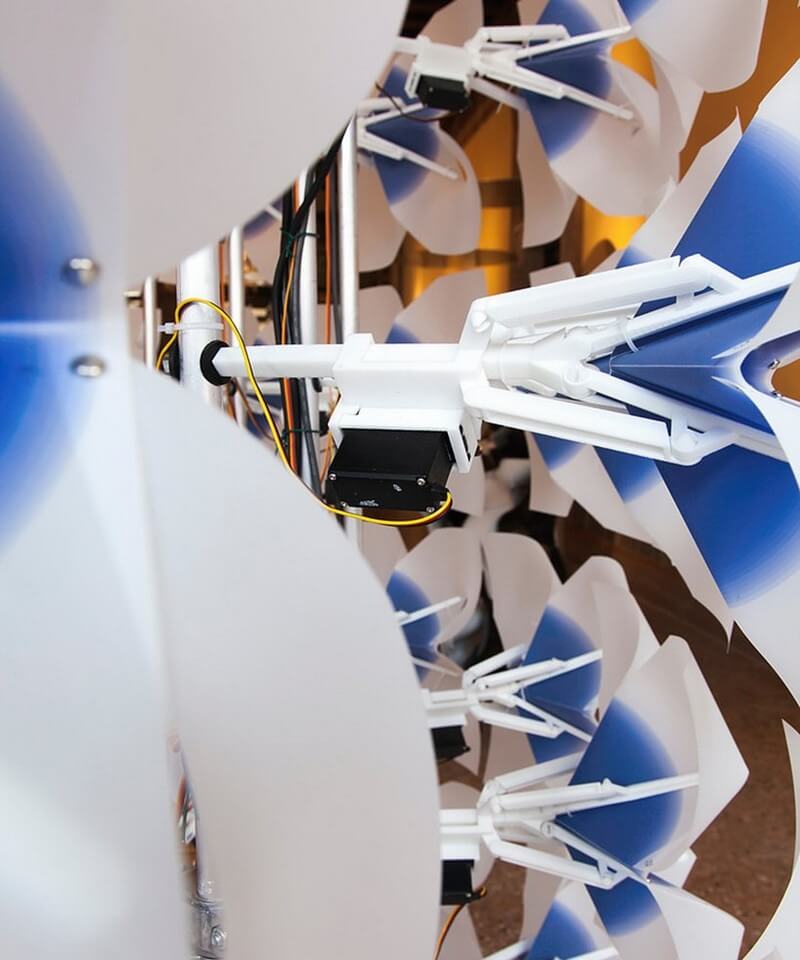
leeMundwiler‘s presentation in venice is physical embodiment of the studio’s ongoing investigation into the concept of life in ‘inorganic architecture’. ‘what if architecture is no longer a static entity,’ lee questions, ‘rather, it is engineered to be an animated autonomy that self regulates its own destiny as a living organism thriving in a challenging environment, it endures and is adapted to ever-changing conditions by reacting to the external forces.’
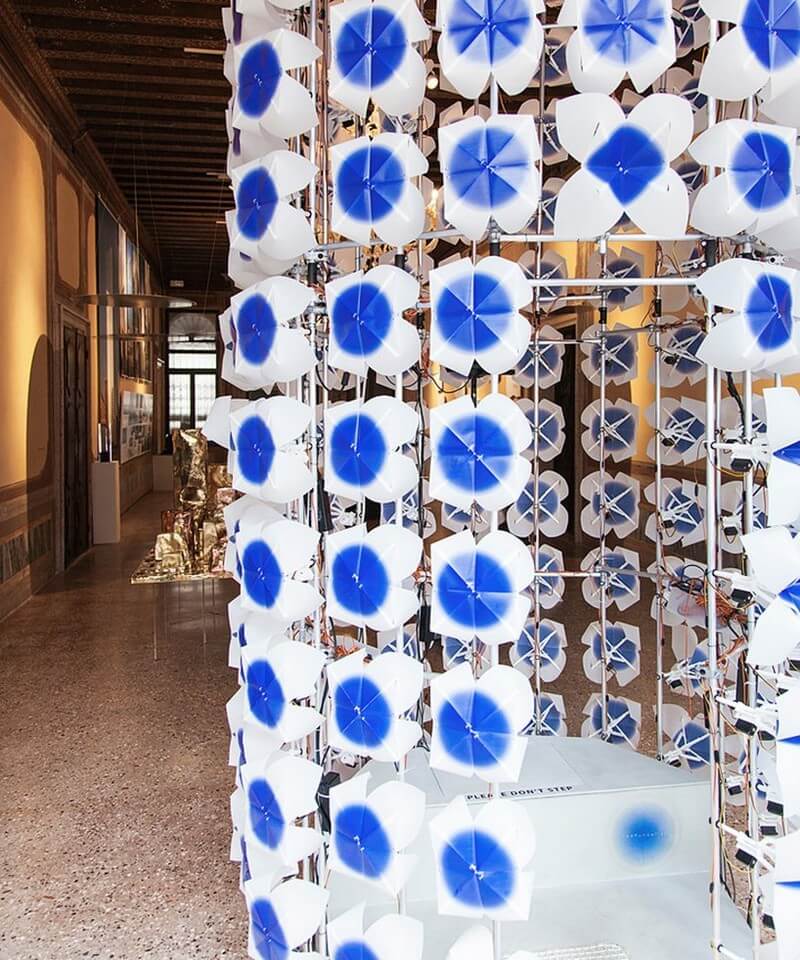
‘CHiLL’ interacts to form a game as one of the many gestures perceived in architecture as a distinctive vocabulary,’ writes architect and professor Thom Stauffer about the installation. ‘furthermore, it is a metaphor calling out the undercurrent issues of human existence.
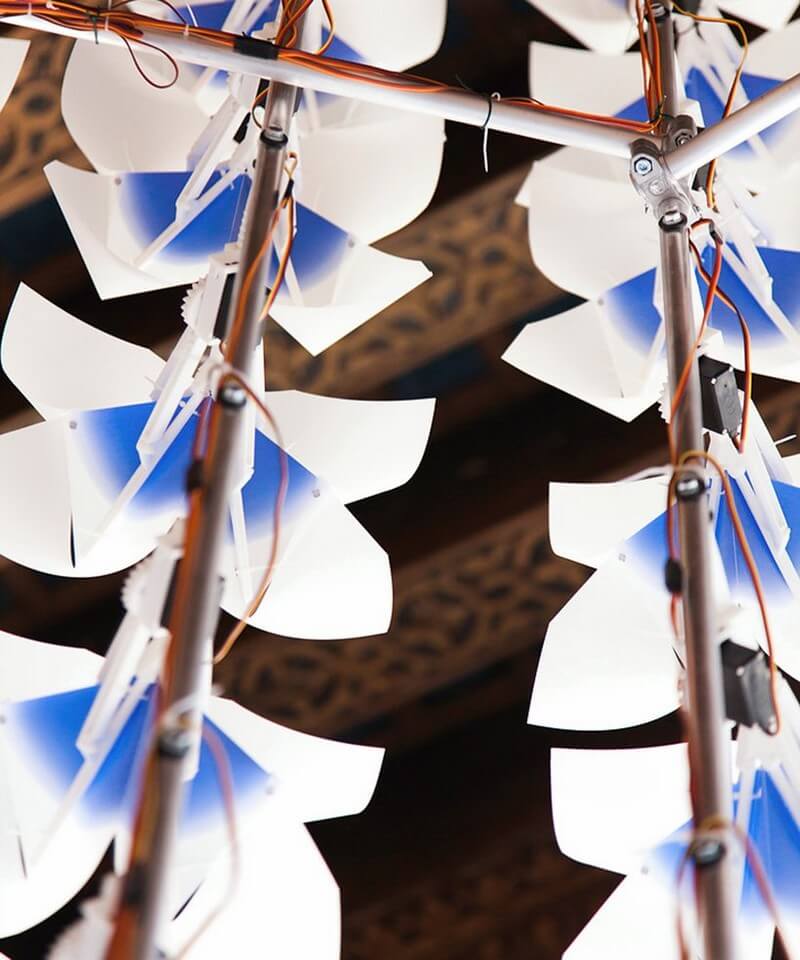
Its broader purpose is for users and viewers to potentially contemplate the intricate, interconnected, technological, and mechanical applications employed outside of architecture. the intention here is to investigate how a system that is in opposition to a reciprocal design approach would disturb architectural principles of consent, the same consent breached by human intervention in a natural world.’
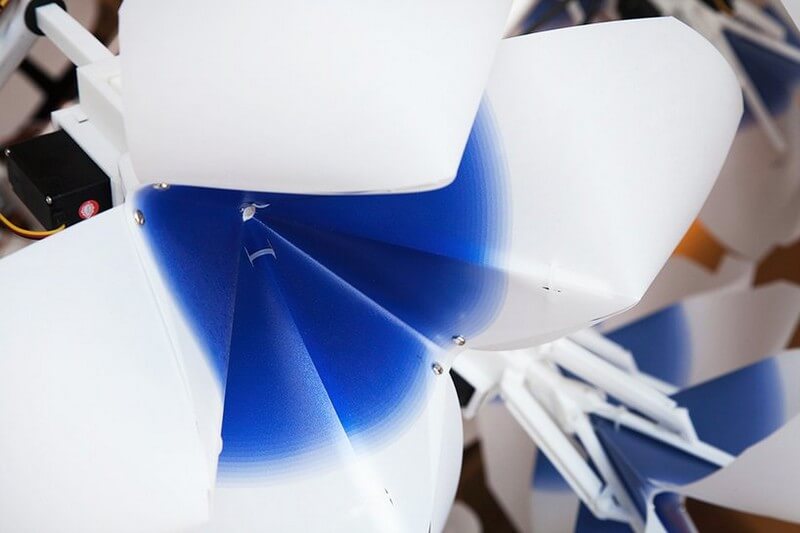
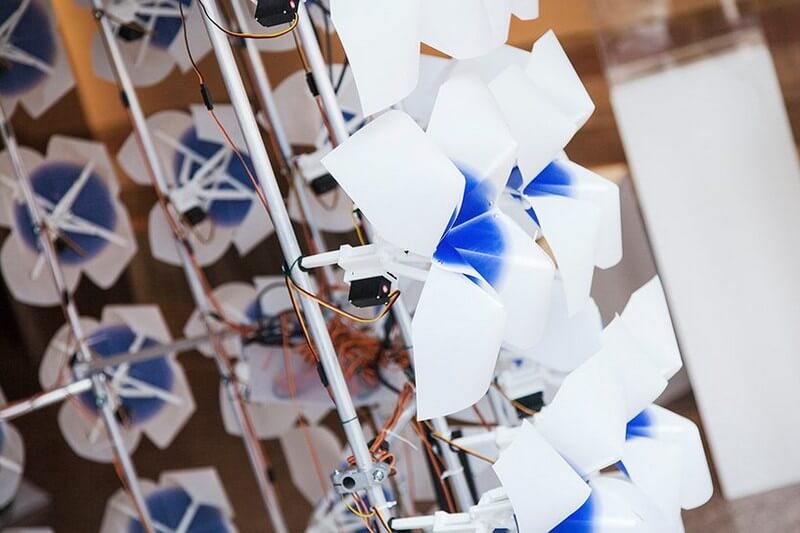
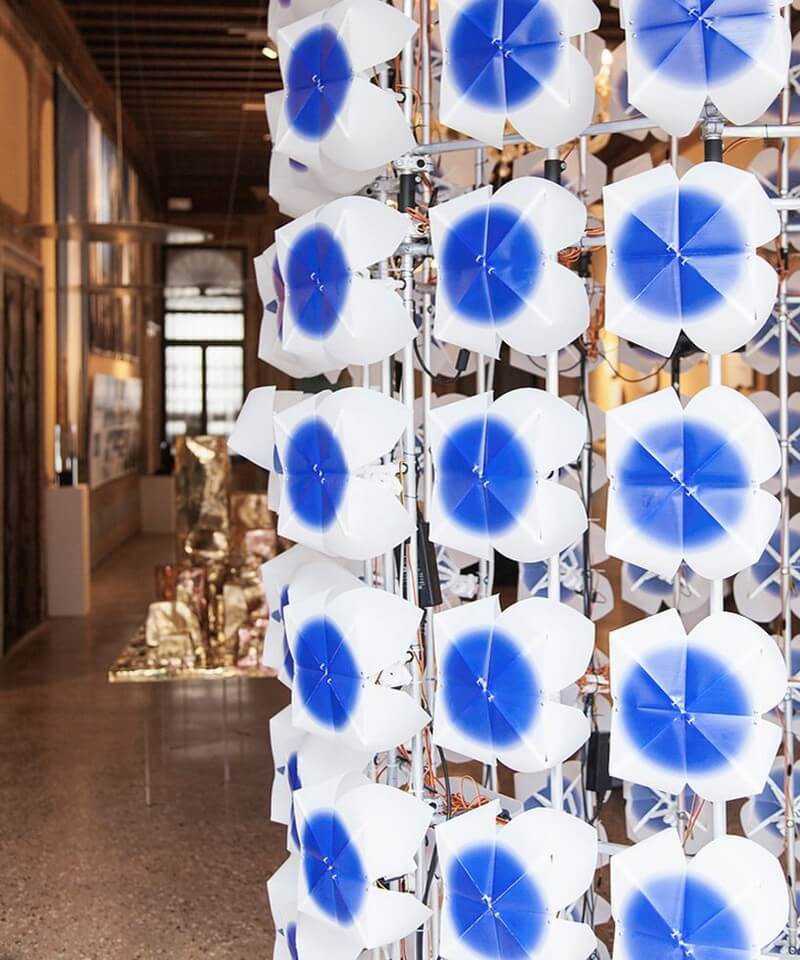

























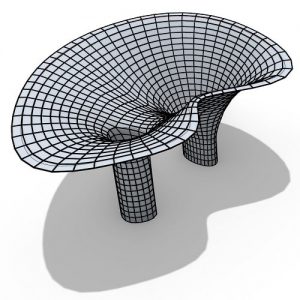
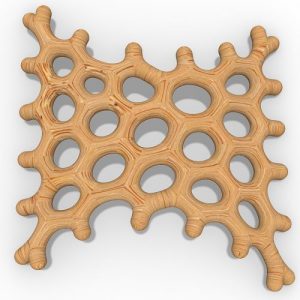
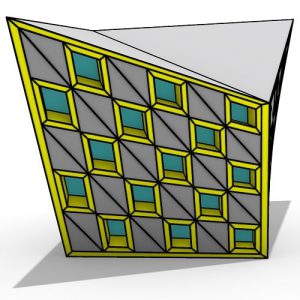
Comments